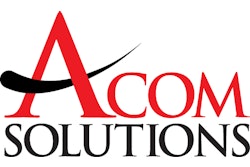However, only half of consumer firms effectively apply it, according to Aberdeen
Boston — July 26, 2004 — Consumer product manufacturers that automate product development processes with integrated product data management, project management and analytical tools outperform peers in development cycle times and new product costs, quality, revenues and profits, according to a new Aberdeen Group study.
Based on a survey of design, development and operations executives at more than 215 consumer products companies, Aberdeen found that product lifecycle management (PLM) technologies delivered such benefits to users as increased revenue contribution of new products, reduced product costs by more than 17 percent, shrunk design cycles by more than 25 percent, reduced time-to-volume cycles by more than 10 percent, improved part reuse by more than 30 percent, and increased engineering productivity by more than 15 percent.
Aberdeen's "Product Development in the Consumer Industries Benchmark" study also found that companies using PLM technologies reported 12 times fewer product defects and 14 times fewer product recalls than non-users. However, only about half of all consumer companies have effectively leveraged PLM technologies to date.
"Our study identified PLM automation as the most effective, and least used, ever for product development improvements," said Tim Minahan, Aberdeen's senior vice president of supply chain research and author of the report. "Considering the limited penetration of these technologies within the consumer sector, PLM automation can be a competitive weapon for product innovation and competitive differentiation for consumer companies."
The study identified the following as the PLM technologies consumer firms have prioritized for investment within the next two years: product data management, product costing, project and program management, and visualization.
Other areas identified for technology investment include manufacturing design and simulation, sourcing, and artwork and packaging design management. Technology investment priorities varied by industry.












